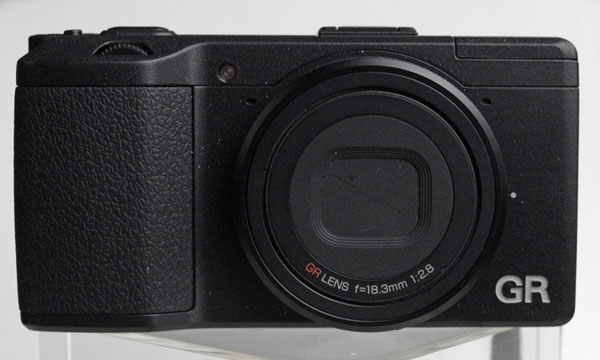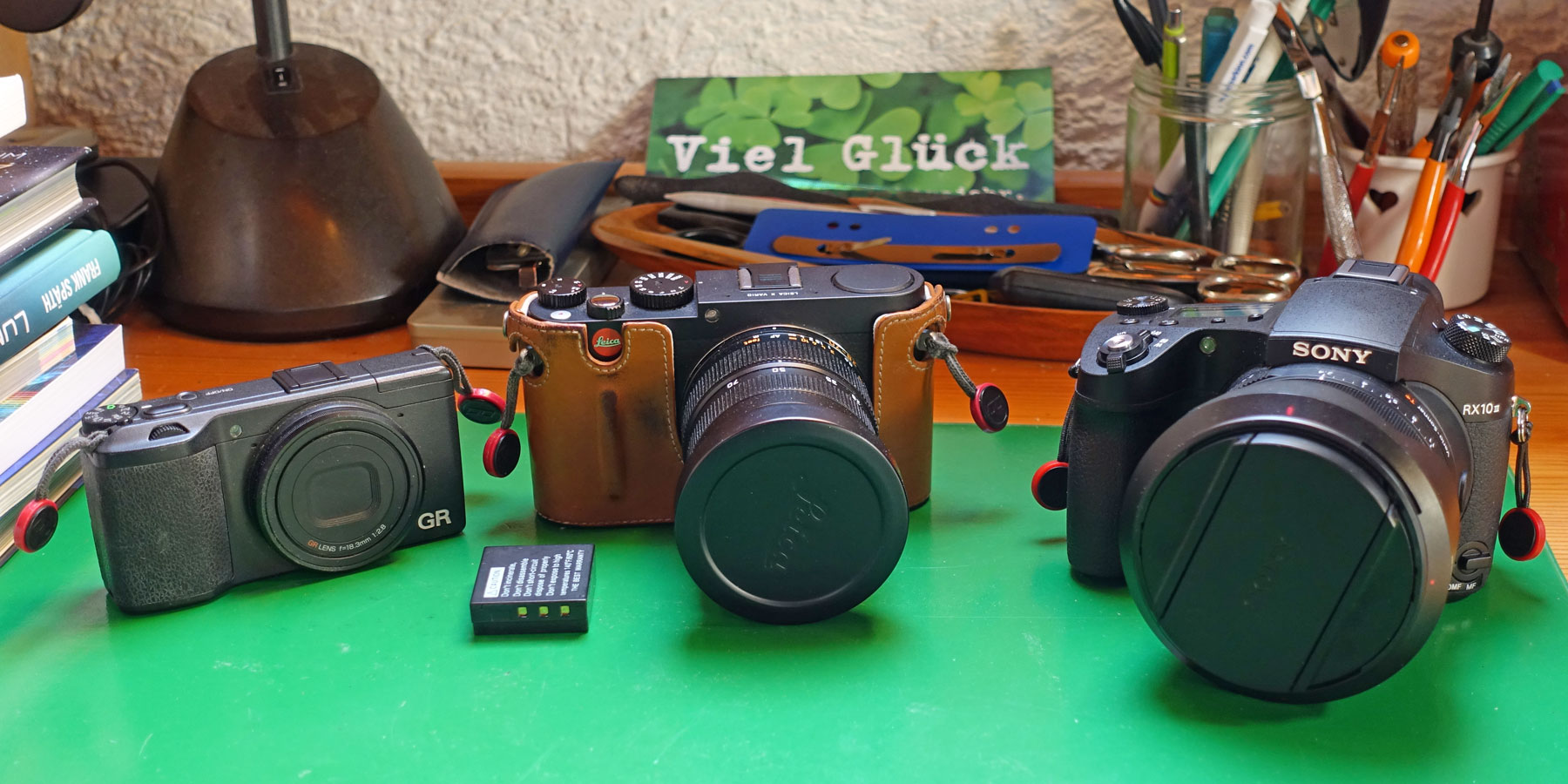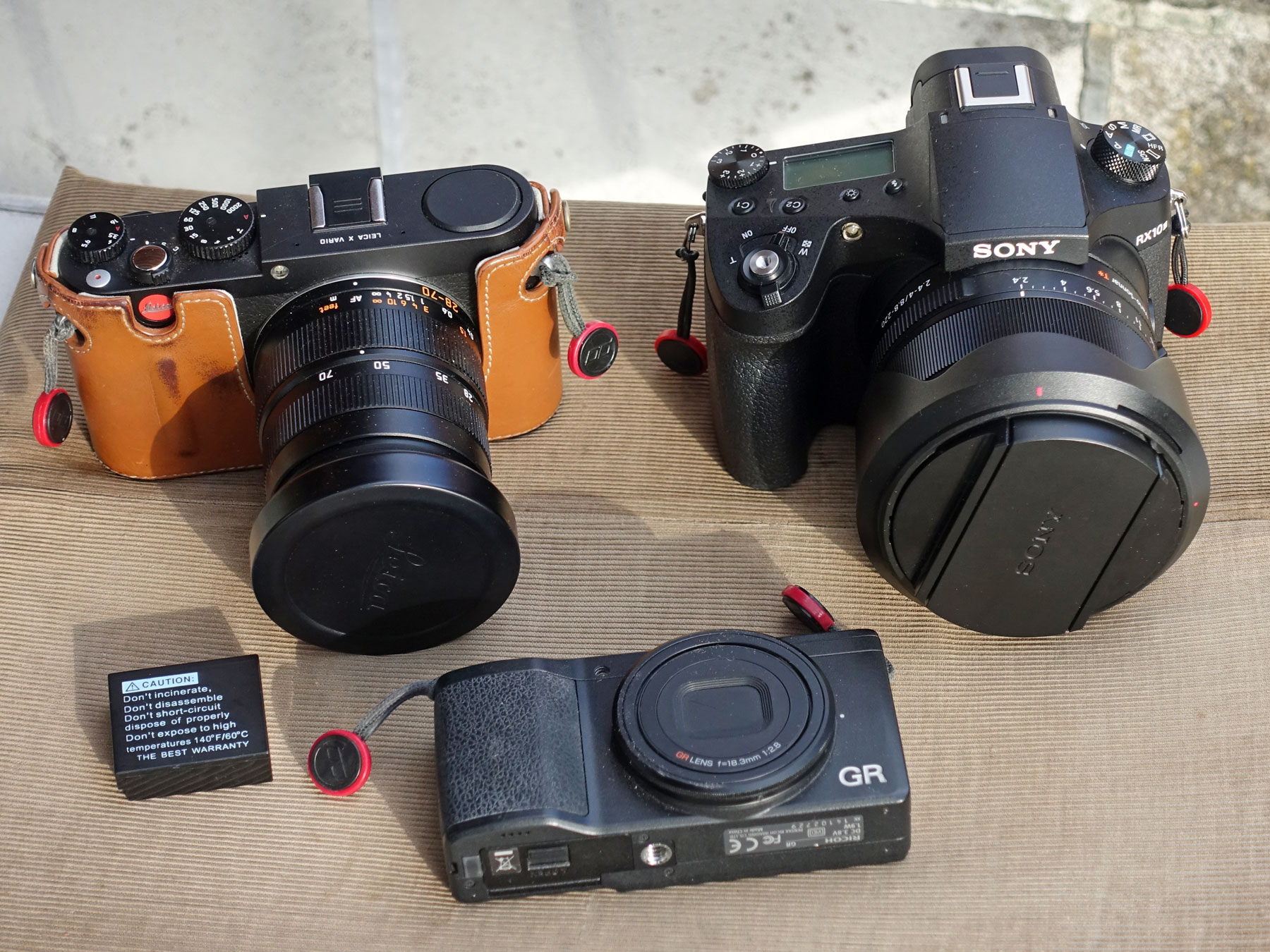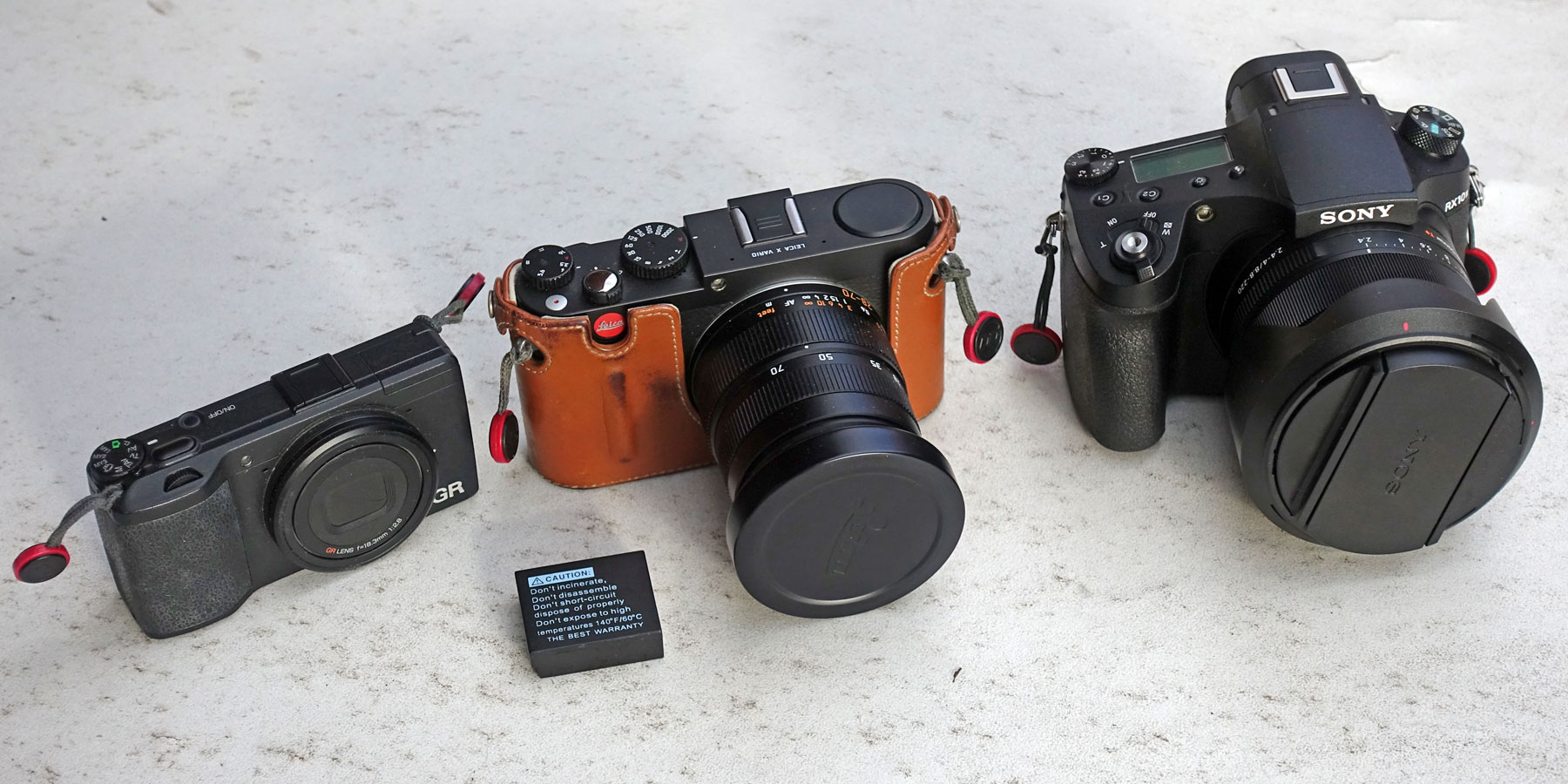Ricoh GR: Introduction
Purpose of My Ricoh GR Pages | How I Became A Ricoh GR Owner | Now I Am A Ricoh GR Owner... | Now I Was A Ricoh GR Owner... | Would I Recommend A Ricoh GR to You?
Archive
Note: The GR was a "Ricoh" camera from the beginning. However, with the release of the APS-C sized GR, Ricoh started to promote it under the "Pentax" label, albeit not really in a consistent manner. Anyway, regardless of what Ricoh is doing, I still call it "Ricoh GR"...
| Note: In autumn 2015, I used the GR for the first and last time on vacation; the fixed focal length was a bit too limited for this application. In 2017, I bought a Sony RX100 M4 to have a compact camera with some zoom range and good image quality. From then on, I used the GR only very rarely, mostly, for taking astronomy pictures, which was the case including the year 2018. At the end of March 2019, I gave, with a heavy heart, the Ricoh GR in payment to the dealer, in order to finance a Sony RX10 M4. I therefore can no longer report any experiences with this camera here. |
Purpose of My Ricoh GR Pages
My Ricoh GR pages are intended as an information source for existing and prospective Ricoh GR owners. However, there is no intention to offer a complete or even up-to-date information source, because I do not have the time for such a project. The focus of my pages is on presenting my personal experiences with this camera and thereby providing one or the other useful tip for others.
How I Became A Ricoh GR Owner
Owning and (mostly) expanding the Ricoh GXR system since the end of 2009 and adding a Leica X Vario to my equipment in July 2013, there were a few gaps evident in my equipment: No real tele capabilities (with an APS-C sensor), and no "pocketable" camera (with an APS-C sensor). A new DSLR body would allow to close the tele gap - and also require some investment in new glass. But then I would end up where I came from... So I decided to close only the second gap and think about a pocket camera with an APS-C sensor. This year brought at least two of them to the market: The Nikon Coolpix A and the Ricoh GR (there are some more contenders from Sony, Fuji, and even Leica...). While both cameras are very close in performance, most tests give the Ricoh an edge, and - more importantly - I am used to the Ricoh handling style. Therefore, I finally opted for the Ricoh GR and ordered one at Christmas 2013.

Figure: The Ricoh GR
I was not sure, whether I would really be content with just one focal length and particularly with a focal length of 28 mm (equivalent). In addition, using a camera with an LCD screen was also new to me. I thought that it would mean that I will have to use glasses when taking photos. But adding an (optional) optical viewfinder would make the camera bulky again. In the end, I took most often photos using the LCD screen without wearing glasses...
A Few Words About the Ricoh GR
The Ricoh GR was introduced as a film camera in 1996. Several models appeared until 2001. In 2005, the GR reappeared as a digital camera (with a small sensor). Soon it become sort of a cult camera among street photographers, although the test result often were not as good as expected (mostly due to the small sensor). In 2013, the 5th digital version of the GR finally was equipped with an APS-C-sized sensor within more or less the same "package." See the special GR site for an overview of the models.
While improving image quality considerably, the change to an APS-C sensor, however, also introduced a couple of drawbacks which may worry owners of previous GR models:
- No image stabilization (similar cameras with an APS-C sensor also lack image stabilization)
- Slower lens (f/2.8 versus f/1.9 in GRD IV)
- Shallower depth of field, which may be a problem for some street photographers...
- "Meager" macro mode (1:5, minimum object size is 12*8 cm) - actually, this is only a "close-up" mode...
Now I Am A Ricoh GR Owner...
And am I happy with the Ricoh GR? Well, yes - its quality and operating concept convinced me, especially since the latter was already known to me from my GXR camera and my wife's Ricoh compact cameras. And yet I have to admit that, after an initial phase of intensive use, I rarely used the camera in spring and summer 2014. This was certainly due to the fact that its 28 mm lens appeared too limited to me for many applications, especially during vacations. That is why I gave the Leica Vario X with its 28-70mm zoom lens the preference on these occasions. Admittedly, it was already clear to me from the beginning that the GR's 28 mm lens would be somewhat limiting for me, particularly since I am more of a "50 mm lens type"... Other photographers, however, are very happy with the GR's focal length of 28 mm. And I also had to get used to a camera without a viewfinder...
In autumn and winter 2014, I almost forced myself to use the Ricoh GR instead of the Leica Vario X and took some very beautiful autumn and winter photos with it. I also used it thereafter more for "everyday shots," which I usually took with the X Vario. Thus, the GR was definitely used more frequently at than time... And, of course, it was always used instead of the X Vario, whenever a camera had to fit into my coat pocket or rucksack...
All in all, you can read my experiences with this camera in the GR area, so I do not want to write anything more about it here.
In autumn 2015, I used the GR for the first and last time on vacation; the fixed focal length was a bit too limited for this application. In 2017, I bought a Sony RX100 M4 to have a compact camera with some zoom range and good image quality. From then on, I used the GR only very rarely, mostly, for taking astronomy pictures, which was the case including the year 2018.
Now I Was A Ricoh GR Owner...
At the end of March 2019, I gave, with a heavy heart, the Ricoh GR, together with a Sony RX10 M3 and a Leica X Vario, in payment to the dealer, in order to finance a Sony RX10 M4.
Good Bye to Ricoh GR, Sony RX10 M3, and Leica X Vario
Would I Recommend A Ricoh GR to You?
I would not only do that - I already did so often in photo forums when photographers asked for recommendations for a "pocketable" second camera with good image quality. Of course, the Ricoh GR always has to compete with smaller cameras offering a zoom lens and good image quality, like the Sony RX100 in its variants and several similar cameras with a 1" or larger sensor. I think that if such a choice has to be made, everyone has to decide on his or her own what is really important from a personal perspective. I like the operating concept of the Ricoh GR much better than the Sony's. It also performs better at higher ISO values than the RX100 M1. But you have to be willing to confine yourself to a focal length of 28 mm - and potentially, the crop modes...
| 03.04.2019 |


